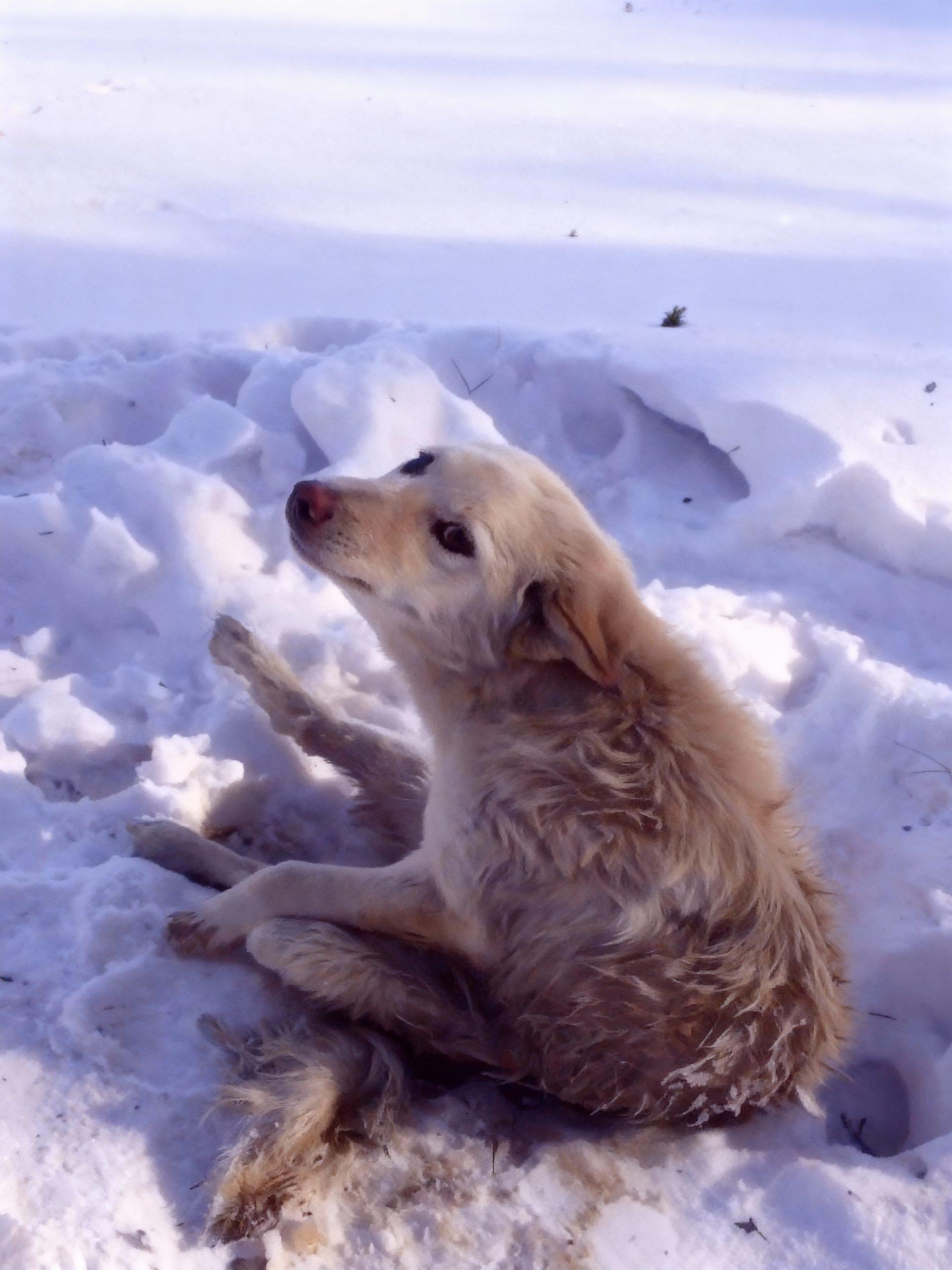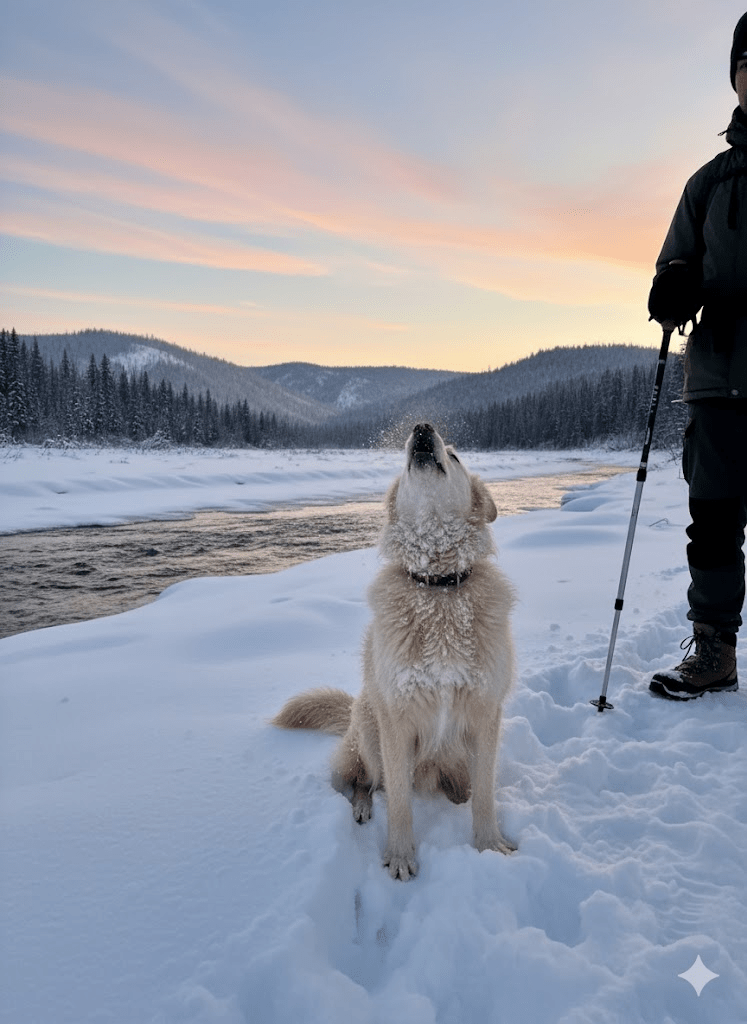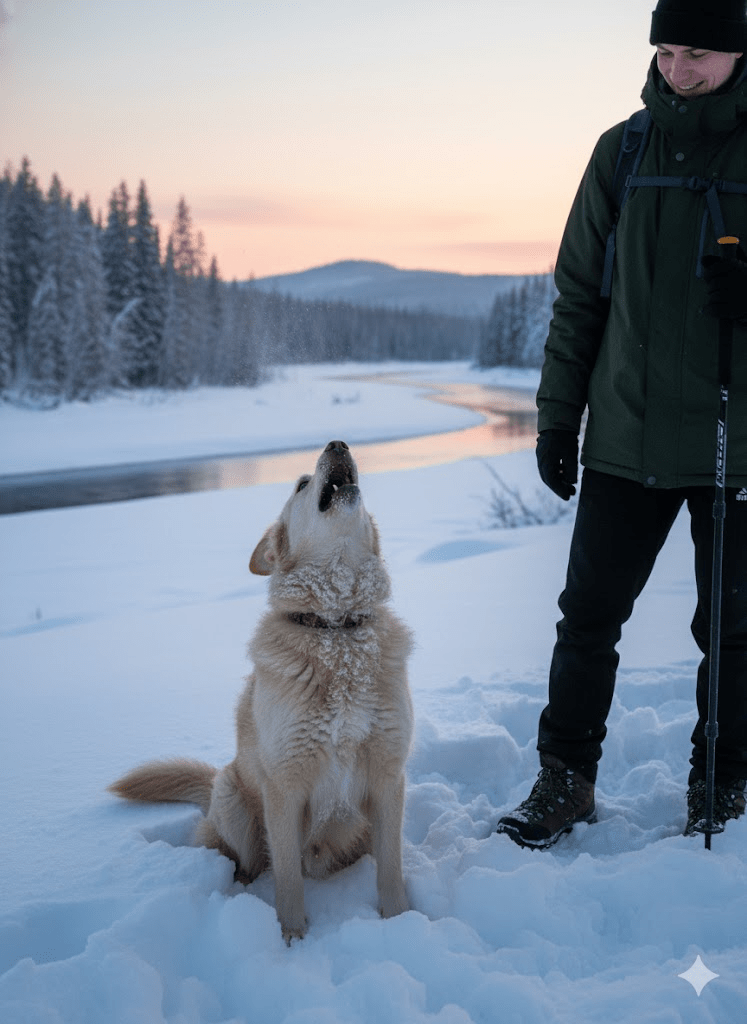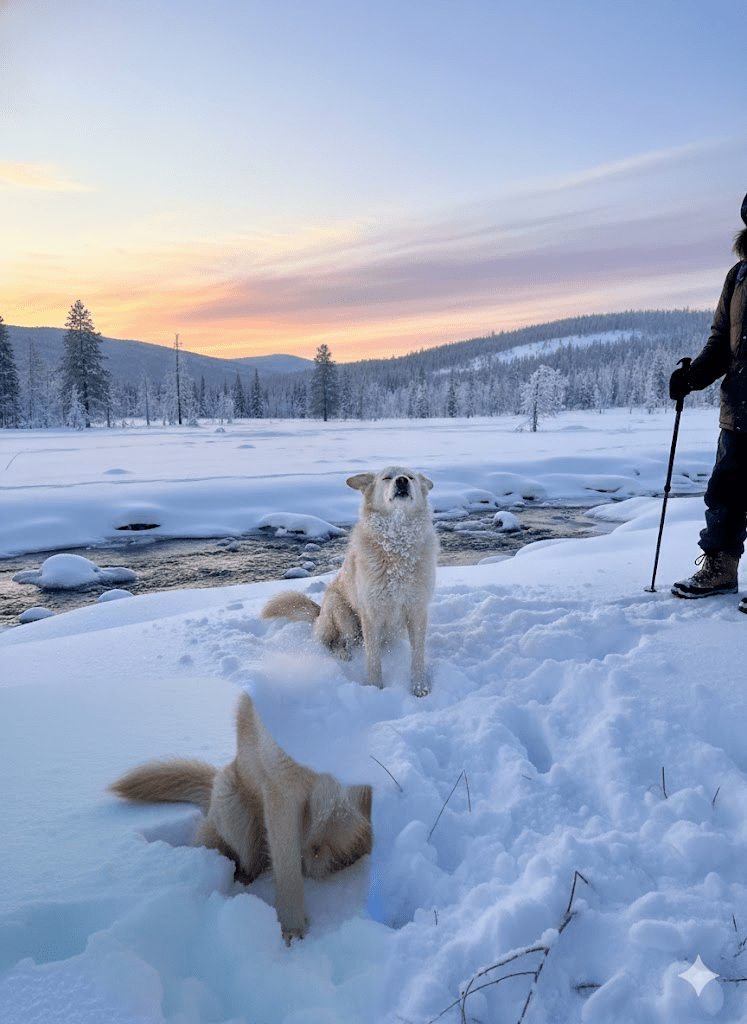Winter, with its pristine blanket of snow and crisp, biting air, often presents a challenging landscape for many creatures. Yet, for some dogs, it’s a realm of pure exhilaration, a canvas for playful abandon and surprising resilience. The image before us captures just such a moment: a shaggy, light-furred dog, its coat a warm contrast to the surrounding white, is nestled deep in the snow, looking up with an expression that speaks of curiosity, perhaps a hint of contentment, and an undeniable connection to its frosty environment. Its posture—slightly reclined, front paws somewhat splayed, and a tail that seems to blend seamlessly with the snowy texture—suggests a comfort born not just of physical warmth, but of an intrinsic acceptance and enjoyment of its surroundings. This isn’t just a dog enduring winter; it’s a dog experiencing it, embodying a spirit that finds joy and purpose even in the harshest conditions. This scene invites us to look beyond the superficial chill and discover the deeper, more profound relationship that certain dogs forge with the winter world, a relationship built on instinct, adaptability, and an unshakeable zest for life.

Dogs, throughout their long history of cohabitation with humans, have developed an incredible range of adaptations, both physical and behavioral, that allow them to thrive in diverse climates. For those breeds that trace their lineage to colder regions, such as Huskies, Malamutes, and certain herding dogs, winter is not a season to be dreaded but a stage upon which their innate abilities truly shine. Their thick double coats act as superior insulation, trapping warm air close to their bodies and repelling snow and ice. The outer guard hairs are coarse and water-resistant, while the undercoat is dense and downy. This natural engineering marvel allows them to maintain a stable body temperature even when temperatures plummet far below freezing. Beyond their fur, their circulatory systems are often adapted to prioritize blood flow to vital organs, while specialized paw pads can withstand extreme cold and provide traction on slippery surfaces. These biological endowments are not mere survival mechanisms; they are the very tools that transform a harsh environment into a playground.

Observing dogs interact with snow offers a fascinating glimpse into their innate instincts and playful nature. Unlike humans who might view snow as an obstacle, many dogs see it as an invitation to engage in a variety of behaviors. They dig with fervor, creating tunnels and hollows that serve as temporary shelters or simply as fun excavations. They roll in it, perhaps to clean their coats, to cool down after vigorous play, or simply for the sheer tactile pleasure of the cold, soft flakes against their skin. The dog in our initial image, with its relaxed posture, seems to embody this comfort, finding a natural recluse within the snowy drifts. This interaction isn’t just random; it’s a testament to their sensory perception. The unique scent of snow, the crunch underfoot, and the feel of it on their fur all contribute to a rich tapestry of experience that is distinctly canine and deeply ingrained.

The psychological benefits of winter play for dogs are as significant as the physical ones. For active breeds, the winter landscape provides an expansive and stimulating environment for exercise. Running through deep snow provides excellent resistance training, building muscle and endurance. The colder temperatures, far from being a deterrent, often invigorate them, leading to bursts of energy and prolonged periods of activity. This mental and physical stimulation is crucial for a dog’s overall well-being, preventing boredom and destructive behaviors. The joy evident in a dog bounding through fresh powder, chasing snowballs, or engaging in a friendly tussle with a human companion underscores the therapeutic nature of these interactions. It’s a reminder that happiness, for many dogs, is found in the freedom of movement and the embrace of their natural instincts, even when those instincts lead them into a frosty wonderland.







